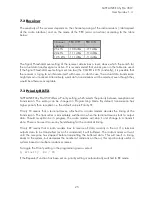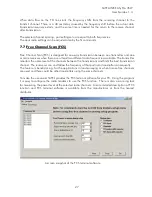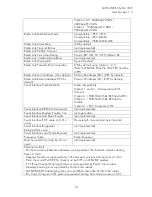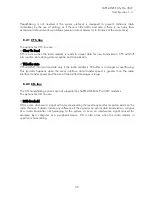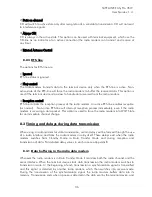
SATELLINE-EASy Pro 35W
User Guide v.1.4
22
6
CONNECTION INTERFACES
6.1
RS-232 interface
RS-232 standard defines the method of serial data transfer between a computer and its
peripherals. The definition includes both the interface type and signal levels. Most computers and
peripherals contain one or more RS-232 type serial ports. The RS-232 standard uses transmission
lines, in which each single signal line level is referenced, to a common ground level. RS-232 has
been designed to be use in serial transfer of data, in situations where the distance between
communicating equipment is less than 15 m. The otherwise useful RS-232 standard is applied in
a multitude of slightly differing ways, (e.g. different pin configurations) and for this reason different
computers and peripherals are not necessarily directly compatible with each other.
6.2
Connectors
The device adopts a high standard waterproof ODU 8-pin data connector. Antenna connector
type is 50 Ohm TNC female.
1.
Data connector (
8 pin ODU)
•
DTE is an abbreviation for Data Terminal Equipment
•
I/O column below denotes the direction of the signal
•
“IN” is from DTE to the radio modem, “OUT” is from the radio modem to DTE
PIN
NAME
I/O
LEVEL
EXPLANATION
1
RTS
IN
RS-232 Request To Send from DTE
2
CTS
OUT
RS-232
Clear To Send. This signal indicates
that the radio modem's serial
interface is ready to receive data
from DTE.
3
SGND
-
-
Signal ground
4
RD
OUT
RS-232
Receive Data to DTE from the radio
modem
5
TD
IN
RS-232
Transmit Data from DTE to the radio
modem
6
MODE
(DATA/PROG)
IN
0-16V
<1VDC or connected to ground =
Programming Mode
>3VDC or Not connected = Data
Transfer Mode Note*
7
Not connected
8
Not connected
NOTE!
When installing the cables of the serial interface, it is recommended that the operating voltage
of all devices is powered OFF.


















